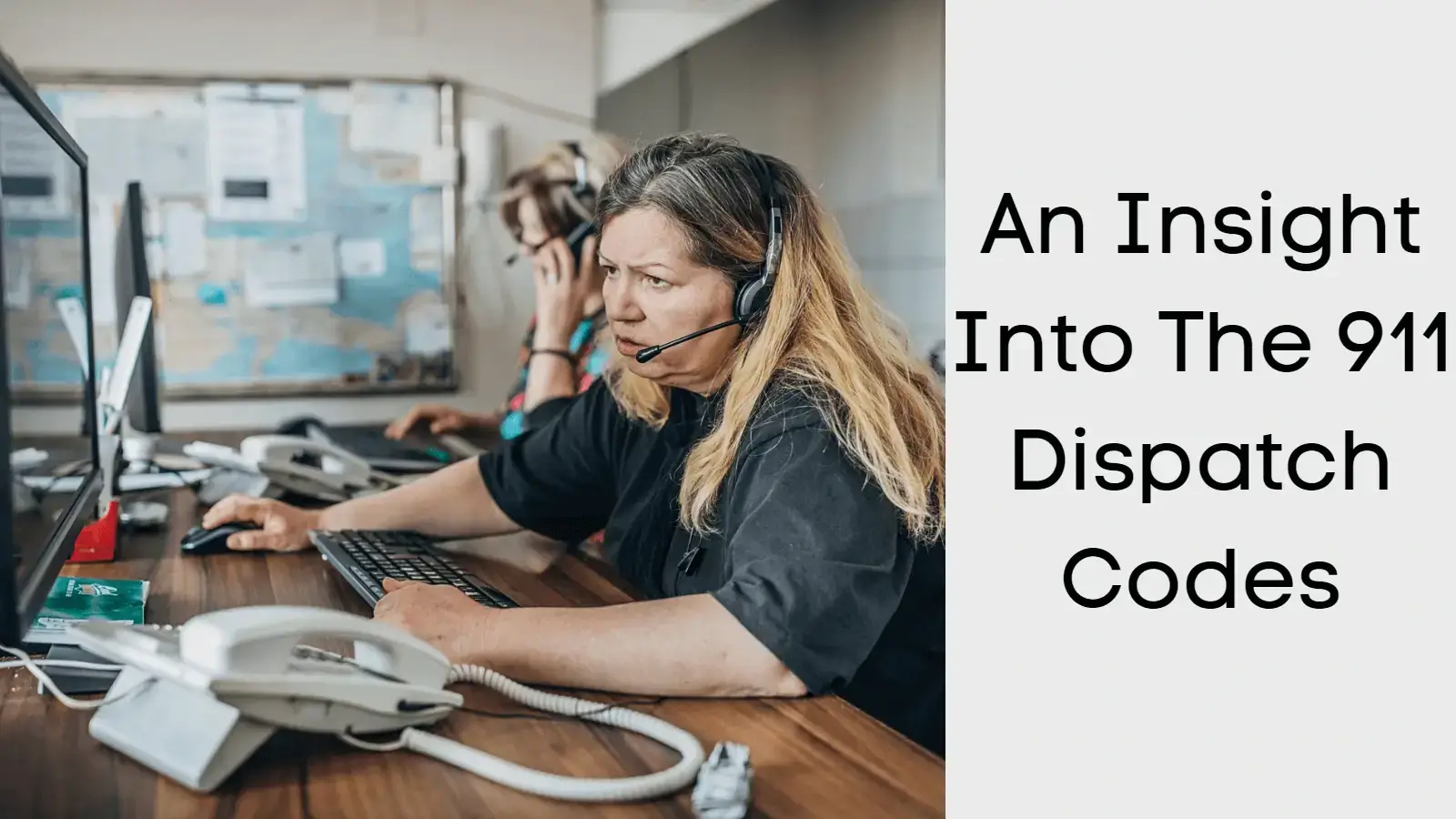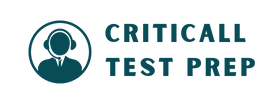Did you know that every city in the United States and Canada has its own set of 911 dispatch codes? These codes are used by emergency responders to communicate with each other during an emergency. Each code has a specific meaning, and dispatchers use them to relay information about the emergency to the appropriate responders. For example, if someone is reporting a fire, the dispatcher might say “11-71” to indicate that there is a fire at the scene.
In this article, we will take a closer look at 911 dispatch codes and what they mean. We will also discuss some of the most common codes and how they are used.

10 - Series Codes
The 10-series codes are used to describe the type of incident. The number following the “10” indicates the type of emergency. For example, “10-31” could be used to indicate a structure fire, while “10-50” means that there has been an auto accident.
- 10-0 Caution
- 10-1 Reception poor
- 10-2 Reception good
- 10-3 Stop transmitting
- 10-4 Message received, understood
- 10-5 Relay message
- 10-6 Change channel
- 10-7 Out of service
- 10-7A Out of service, home
- 10-7B Out of service, personal
- 10-8 In service
- 10-9 Repeat the message
- 10-10 Off duty
- 10-10A Off duty, home
- 10-11 Identify the frequency
- 10-12 Visitor(s) present
- 10-13 Weather and road advice
- 10-14 Citizen w/suspect
- 10-15 Prisoner in custody
- 10-16 Pick up prisoner
- 10-17 Request for gasoline
- 10-18 Equipment exchange
- 10-19 Return(ing) to station
- 10-20 Location
- 10-21 Telephone
- 10-21A Advise home I will return at:
- 10-22 Disregard the last assignment
- 10-23 Stand by
- 10-24 Request car-to-car transmit
- 10-25 Do you have contact with:
- 10-26 Clear
- 10-27 D.D.L. report
- 10-28 Registration request
- 10-29 Check for wants
- 10-29F Subject wanted, felony
- 10-29H Hazard potential from subject
- 10-29M Subject wanted, Misdemeanor
- 10-29V Vehicle Wanted
- 10-30 Doesn’t conform to regulations
- 10-32 Drowning
- 10-33 Alarm sounding, audible
- 10-34 Assist at the office
- 10-35 Time check
- 10-36 Confidential information
- 10-37 Identify the operator
- 10-39 Can () come to the radio?
- 10-40 Is () available for phone call?
- 10-42 Check the welfare of/at:
- 10-43 Call a doctor
- 10-45 Condition of the patient?
- 10-45A Good
- 10-45B Serious
- 10-45C Critical
- 10-45D Dead
- 10-49 Proceed to:
- 10-50 Under influence of drugs
- 10-51 Drunk
- 10-52 Resuscitator
- 10-53 Man down
- 10-54 Possible dead body
- 10-55 Coroner case
- 10-56 Suicide
- 10-56A Suicide attempt
- 10-57 Missing person
- 10-59 Security check
- 10-60 Lock-out
- 10-61 Miscellaneous public service
- 10-62 Meet a citizen
- 10-62A Take a report from a citizen
- 10-62B Civilian standby
- 10-63 Prepare to copy
- 10-64 Found property
- 10-66 Suspicious person
- 10-67 Person calling for help
- 10-68 Telephone for police
- 10-70 Prowler
- 10-71 Shooting
- 10-72 Gun involved
- 10-73 How do you receive?
- 10-79 Bomb threat
- 10-80 Explosion
- 10-86 Any radio traffic?
- 10-88 Assume the post
- 10-91 Animal
- 10-91A Animal, stray
- 10-91B Animal, noisy
- 10-91C Animal, injured
- 10-91D Animal, dead
- 10-91E Animal, bite
- 10-91G Animal, pickup
- 10-91J Animal, pickup collect
- 10-91L Animal, leash law violation
- 10-91V Animal, vicious
- 10-95 Need ID tech unit
- 10-97 Arrived at the scene
- 10-98 Available to assign
11 - Series Codes
The 11-series codes are used to indicate the status of an emergency. The number following the “11” will tell the responders what kind of response is required. For example, “11-71” means that a fire is burning and units should respond immediately.
- 11-10 Take report
- 11-24 Abandoned vehicle
- 11-25 Traffic hazard
- 11-26 Abandoned bicycle
- 11-27 10-27 W/driver held
- 11-28 10-28 W/driver held
- 11-40 Advise if ambulance needed
- 11-41 Ambulance needed
- 11-42 No ambulance needed
- 11-44 Deceased person (Coroner Req’d)
- 11-48 Furnish transportation
- 11-51 Escort
- 11-52 Funeral detail
- 11-54 Suspicious vehicle
- 11-55 Officer being followed by auto
- 11-56 11-55 W/dangerous persons
- 11-57 Unidentified auto at assignments
- 11-58 Radio monitored, use phone
- 11-59 Intensive attention: high hazard, business areas
- 11-60 Attack in a high hazard area
- 11-65 Signal light out
- 11-66 Defective signal light
- 11-78 Aircraft accident
- 11-79 Accident – Ambulance sent
- 11-80 Accident – Major injuries
- 11-81 Accident – Minor injuries
- 11-82 Accident – No injuries
- 11-83 Accident – No detail
- 11-84 Direct traffic
- 11-85 Tow truck required
- 11-94 Pedestrian stop
- 11-95 Routine traffic stop
- 11-96 Checking suspicious vehicle
- 11-97 Time/security check on patrol
- 11-98 Meet:
- 11-99 Officer needs help!
Code Signals - Police
Code signals are used to quickly relay information during an emergency. These are usually simple phrases like “Code Red” or “Code Blue”. A code signal is typically used when a situation requires immediate action and there is no time for a dispatcher to use the 10-series or 11-series codes.
- Code 2 Urgent – no light or siren
- Code 3 Use lights and siren
- Code 4 No further assistance needed
- Code 5 Stakeout
- Code 6 Stay out of area
- Code 7 Meal break
- Code 8 Restroom break
- Code 9 Summer uniform
- Code 10 SWAT pre-call up
- Code 11 SWAT Call up
- Code 37 Subject/Property wanted
Code Signals - Medical & Fire
- Code 10 Critical Trauma case
- Code 20 Acute Trauma case
- Code 30 Trauma case
- Code 40 Serious case (IV started)
- Code 50 Basic transport (not serious)
- Code N Newsworthy event
Phonetic Alphabets
Emergency responders often use the phonetic alphabet to communicate clearly during an emergency. The phonetic alphabet is a set of standardized words that have distinct spelling and pronunciation.
Police
- Adam
- Boy
- Charles
- David
- Edward
- Frank
- George
- Henry
- Ida
- John
- King
- Lincoln
- Mary
- Nora
- Ocean
- Paul
- Queen
- Robert
- Sam
- Tom
- Union
- Victor
- William
- X-ray
- Young
- Zebra
Military
- Alpha
- Bravo
- Charlie
- Delta
- Echo
- Foxtrot
- Golf
- Hotel
- India
- Juliett
- Kilo
- Lima
- Mike
- November
- Oscar
- Papa
- Quebec
- Romeo
- Sierra
- Tango
- Uniform
- Victor
- Whiskey
- X-ray
- Yankee
- Zulu

[…] An Insight Into the 911 Dispatch Codes […]